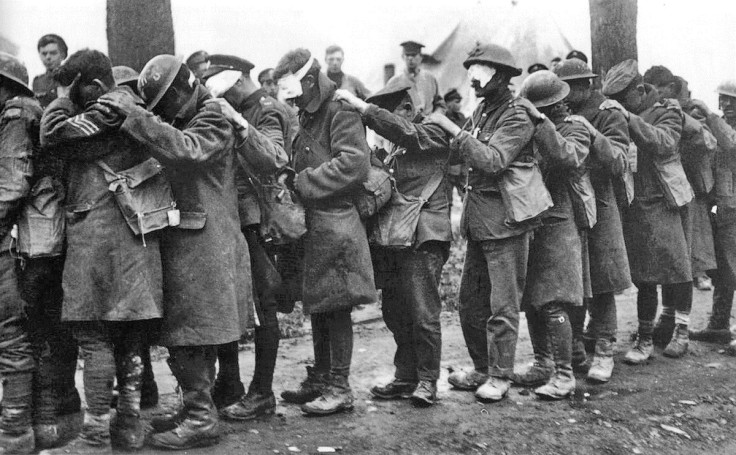The 'Holy Grail' hedge fund strategy to handle a black swan the size of World War I
Carmot Capital's George Sokoloff proposes a thought experiment – a breakdown of a well-diversified investment strategy in 1912.

To illustrate a strategic gap common to today's portfolio managers, George Sokoloff, PhD, founder and CIO at Carmot Capital, proposes an interesting thought experiment – a breakdown of a typical, well-diversified investment strategy in 1912.
Teetering on the cusp of revolution, war and depression, Sokoloff's point is that, even following a modern portfolio management strategy, the manager would stand to lose the vast majority of their assets. People tend to rely on historically stable relationships between bonds and stocks, and when that relationship breaks down – as often happens in a liquidity event – even complicated strategies involving some arbitrage, essentially blow up.
Imagine being a wealth manager out of Geneva in 1912, trying to create a nice diversified portfolio of developed market bonds, and emerging market bonds, says Sokoloff.
Say 39% of client assets would be split between stocks of Great Britain, France, German Empire, Austria-Hungary and Italy: truly mature, developed markets.
Some 21% of assets would go into stocks of the two fastest growing economies: Russian Empire and North American United States. The wealth manager might also put a smidge into emerging economies like Argentina, Brazil or Japan.
In bonds, allocation would be somewhat similar. Gilts with sub-3% yield would be the benchmark, with the rest of developed and emerging bonds trading at a spread.
Alternatives investment could be in anything ranging from arable land in central Russia or the Great Plains, to shares of new automotive or aeroplane startups in Europe and America, to Japanese manufacturing ventures.
This well-intentioned, balanced portfolio would be in for a wild ride in the next decade and possibly drawdowns of as much as 80%. The saving grace would have been to invest in Detroit startups or other investments that successfully straddled wars, Russian revolution, crises and the technological boom of the early 20th century.
Sokoloff told IBTimes UK: "That thought experiment is really frightening to me. You followed very sound modern portfolio management advice back then and still in ten years your portfolio is gone. I don't think we are really learning the lessons of history, especially now that the global economy is so much more interconnected than it was before."
Most investment strategies follow a Taleb distribution, whereby an appearance of low risk and steady returns camouflages a reality, which is a high probability of a small gain, but a small probability of a very large loss that more than outweighs the gains.
"You could be making 5% per year but then there could come a year that you lose 30% or maybe more, and that's kind of the big nature of the Taleb distribution," said Sokoloff.
"Unfortunately most investment strategies actually follow that, including very sophisticated hedge funds, risk parity funds etc. Essentially the whole endowment model, big endowments, family offices and institutions, all of them have investments and their portfolios unfortunately follow the Taleb distribution and they do have a fat left tail.
"They try to hedge it as much as they can just by purely diversifying. But liquidity events are so insidious that your benefits are gone simply because your correlations start converging to one."
Sokoloff highlights ways around this. For instance, there are investment vehicles that offer a minus-Taleb distribution. "So essentially a Taleb distribution that's slit along the vertical axis so it has a negative mean, so you are guaranteed to lose money over time, but do have a very fat tail on the right side. When things go bad these investments perform extremely strongly.
"That is kind of the simplest hedge to the endowment model. We can think of this as just buying puts on the index, and that's frankly what many investment managers do follow."
Taking this as context, an ideal investment vehicle would make money over time with a positive fat right tail that performs strongly when liquidity is poor. That would be essentially the Holy Grail for any sort of endowment model, notes Sokoloff.
"So imagine you have a vehicle that actually makes money on average, maybe like a bond-like performance, but then at the same time, it really loves low volatility conditions and poor volatility conditions.
"It works both ways: when things are calm it's an integral part of a portfolio and makes money; when things go south its hedging characteristics start showing up and that's when you start making a lot of money. The rest of your portfolio suffers while your Holy Grail investment really shines and creates a huge positive return. That's the idea that we are surfacing," he said.
There are a number of types of strategies which make good candidates for the Holy Grail. Many derivatives like conditions when volatility jumps. During a stockmarket crisis credit spreads between different quality bonds start increasing as people see higher chance of default on lesser quality bonds. This is where you can play on the derivatives space that hinges on the credit spreads; so credit default swaps for instance.
Commodity trading advisors (CTA), or people looking into the movement of futures of different kinds and taking bets on either side, would be another candidate class of assets for this type of hedging.
Another interesting hedge would be the sub-class of macro managers, the much maligned macro investors that are really contrarians. They believe there will be will be some economic shocks going forward, especially with emerging markets like China and others; or that Japan's unusual policy will backfire. The best-known in this camp are the likes of Hugh Hendry at Eclectic and Kyle Bass of Hayman Capital.
Sokoloff said: "Those are the managers that use a lot of macro instruments that are convex in nature and they are just trying to time when things start going south. They have not really been good performers; they have been hated in last seven years and have lost assets as well. But still, they are a very good hedge."
The last candidate would be algorithmic traders that benefit from prevalence of fear in the market. When fear strikes markets people start acting in very chaotic fashion. Sokoloff points out that the human psyche is really tuned in a certain way, which makes humans very predictable when they panic. That makes a ripe field to harvest with algorithmics.
"There are algorithmic traders that also provide convex returns, tail risk hedging returns and that allows you to also benefit very strongly from any sort of collapse, slide or risk situation. And that is the camp we are in."
Sokoloff said some of these strategies require good timing, while some do not. Algorithmic strategies don't try time the market, they just try to adapt to the risk and conditions of the market. "Obviously there is a different effect that you get at the time of a crash and post-crash; the macro strategists and derivative-based strategists try to profit on the day of the crash.
"Overall algorithmic strategies will not necessarily make money on the day of the crash but in the following panic can essentially pick and harvest great returns."
Returning to the current state of the markets, Sokoloff said the world's economic and financial system relies on a continued growth in global trade and global economy. This is problematic.
"What we are seeing right now, unfortunately, is stagnation. The growth rate is zero for developed markets. That is the precipice. That is the trigger point for the financial system to start suffering shocks.
"Global trade volumes in the past 18 months have gone nowhere. Pure import and export trade is not growing. It's at zero, which kind of tells you that if trade is flat where does the GDP really grow on? And most of the time it's just gathering expenditures. That is obviously a non-sustainable situation.
"A non-sustainable situation needs a trigger point or a flash point before it can really erupt. There's plenty flash points; political, military, economic, social. They are just not triggering yet. But they will at some point.
"Frankly, the situation that we have right now could be just like 1912."
© Copyright IBTimes 2025. All rights reserved.






















